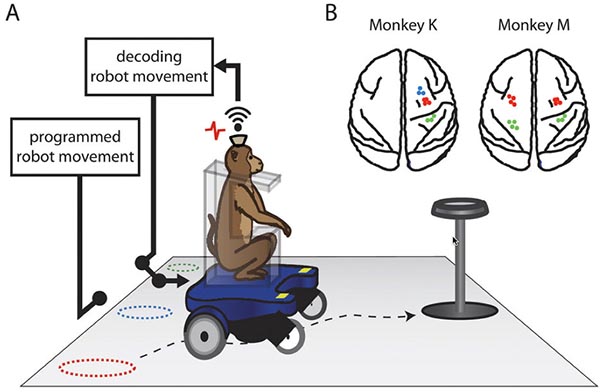Duke Health neuroscientists have developed a brain-machine interface (BMI) that allows monkeys to steer a robotic wheelchair with their thoughts.The BMI uses signals from hundreds of neurons recorded simultaneously in two regions of the monkeys’ brains that are involved in movement and sensation. Scientists began the experiments in 2012, implanting hundreds of hair-thin microfilaments in the premotor and somatosensory regions of the brains of two rhesus macaques. They trained the animals by passively navigating the chair toward the bowl containing grapes. During this training phase, the scientists recorded the primates’ large-scale electrical brain activity. The researchers then programmed a computer system to translate these recorder brain signals into digital motor commands that later controlled the movements of the wheelchair.
Monkeys learn to drive wheelchairs with their thoughts





